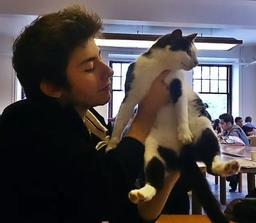Up until now, you've seen the location pronouns in the following forms: locative (e.g burada), ablative (e.g buradan), dative (e.g buraya). In this lesson you will learn the remaining forms: the nominative and the accusative.
In Turkish, the root forms of these pronouns are bura (here), şura (there, close-by), and ora ((over) there). Some people consider these bare forms grammatical, that is to say, they can stand on their own and mean something. According to most, a suffix needs to be attached in order to be grammatical. These root forms can get any of the case suffixes, possessive suffixes, or the plural suffix, or they can combine suffixes. But first, let's complete the case set:
| Nominative | Accusative |
|---|---|
| burası | burayı |
| şurası | şurayı |
| orası | orayı |
As you can see, the nominative form gets a third person possessive suffix (for absolutely no reason). Now let's put them in sentences:
| Burası güzel. | Here is nice. | Burayı hatırlıyor. | S/he remembers this place. [Lit. She remembers here.] |
| Orası nasıl? | How is (it) there? | Orayı sevdin mi? | Did you like (it) there? |
There's a little oddity in Turkish about these pronouns. You can combine the nominative and accusative form and get the same meaning as simply the accusative form. Such as:
| Burasını hatırlıyor. | S/he remembers this place. [Lit. She remembers here.] |
| Orasını beğendiniz mi? | Did you like (it) there? |
These sentences have identical meaning with the sentences that only used an accusative suffix, even though these contain an additional suffix. I advise you to use nominative-only and accusative-only forms instead of the combined forms, just to be safe. However, be ready to see forms like burasını, şurasını, orasını used by natives.

